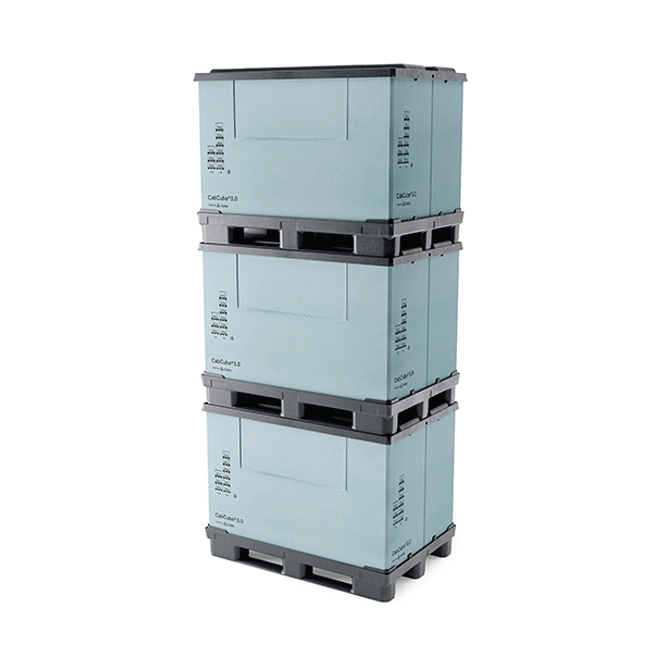
The CabCube 3.0 3R – the latest model in the range – measures 1235mm x 830mm x 954mm when assembled and has a folded height of just 239mm. Weighing 43kg and offering a volume of 722 litres, the unit has a static load capacity of 1500kg, and a dynamic and racking load capacity of 500kg. Warehouse managers will be able to stack a maximum of 1+5 units (at 250kg each).
This new product features three runners on the bottom of the base, so it can be safely used in pallet racking and high bay storage, as well as being deployed more effectively on automation systems. The CabCube 3.0 3R eliminates the need to shrink-wrap pallets of goods in storage and dispatch, saving both time and cost, as well as solving the problem of disposal. The sleeve pack works seamlessly with roller conveyor systems and features a drop door that provides easy access to stored goods. Manufactured to be used through many cycles in the supply chain, the CabCube 3.0 3R is 100% recyclable at the end of its working life.
This new sleeve pack is designed to provide optimal protection of goods in storage and transit. It comprises of three components – a robust base and lid (made from recycled polyethylene), plus a polypropylene sleeve, which folds and fits simply inside the base and lid. This space-optimising feature allows businesses to carry up to 384 units on a standard trailer, leading to substantial cost savings during transportation. For example, 40% less space is required on the truck and in storage compared to a metal container.
Jim Hardisty, Managing Director at goplasticpallets.com, said: “As the exclusive UK supplier of the CabCube 3.0 3R, we are proud to bring this game-changing product to the marketplace. Cabka’s reputation for excellence in design and manufacturing aligns perfectly with our own standards of delivering high-quality solutions that meet the unique needs of the industry.
“By investing in new cost-saving solutions, goplasticpallets.com aims to empower our customers to do more with less. This innovative product not only helps to minimise the storage footprint when empty, but also streamlines transportation, reduces the number of trips required, eliminates the use of cardboard and shrink-wrap, and, ultimately, contributes to a more sustainable supply chain.”







